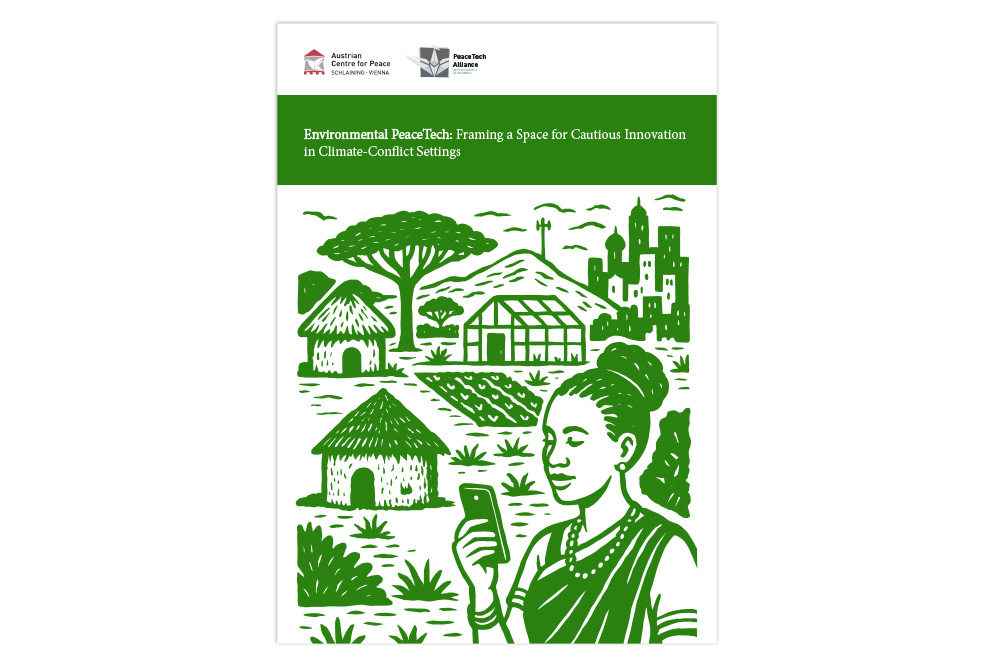


BY NATHAN COYLE / ON 4 AUGUST, 2025
As the climate crisis deepens, its links to conflict and fragility are becoming harder to ignore. Environmental degradation—whether through drought, land degradation, or competition over natural resources—can exacerbate tensions in places already facing political instability. In response, the field of environmental peacebuilding has emerged as a way to foster cooperation through shared ecological challenges, often where more traditional peacebuilding tools fall short.
But what happens when digital technologies enter that picture? Who is building these tools, what problems are they trying to solve, and how do they relate to the practical work of managing environmental stress in fragile or conflict-affected settings?
These are the kinds of questions explored in a recent paper published by the Austrian Centre for Peace and the PeaceTech Alliance, titled Environmental PeaceTech: Framing a Space for Cautious Innovation in Climate-Conflict Settings. The paper introduces Environmental PeaceTech as a new framing—not a fixed field, but a way to think more critically about how digital tools like satellite systems, open data platforms, predictive modelling, or participatory mapping might support environmental peacebuilding. It asks whether this framing deserves to be developed further—or whether it risks repeating the same mistakes under a different label.
In some places, digital tools are already being used to support climate adaptation and environmental cooperation. For example:
These tools can help fill knowledge gaps, support transparency, and foster cooperation. But they also raise critical questions. Who owns the data? Who decides what gets monitored—or what counts as valid knowledge? And what happens when digital systems are introduced into already unequal governance structures?
The paper makes one thing clear: technology isn’t neutral. When digital systems are introduced in fragile or conflict-affected settings—especially by actors from outside—they can just as easily entrench existing inequalities as they can improve outcomes. Poorly designed interventions risk deepening mistrust, misrepresenting local conditions, or concentrating control in the hands of a few.
This is especially relevant when it comes to data-driven tools like AI and remote sensing. Most available climate data platforms, like Copernicus or MODIS, are designed for global modelling rather than local action. And the training datasets used in machine learning applications are still overwhelmingly drawn from the Global North, even though climate-related conflict risks are highest in parts of the Global South.
Still, there are efforts showing what better might look like:
What connects these examples isn’t the technology itself—but the emphasis on local relevance, shared governance, and collaborative design. That’s where the potential lies: not in building smarter dashboards, but in building relationships and systems that people trust.
The value of Environmental PeaceTech will depend on how seriously we take the challenges that both technology and environmental cooperation bring with them. It’s not about innovation for innovation’s sake — but about asking whether digital tools can support peace in ways that are fair, grounded, and actually work. Whether this framing takes root or not, the questions it raises are ones we can’t afford to ignore.
Join the conversation: We’re holding an open event on this topic on 4th December, from 14:00–16:30 at AIT (Austrian Institute of Technology). All are welcome. Keep an eye on our events page for more information.
📄 Read the full paper:
Environmental PeaceTech: Framing a Space for Cautious Innovation in Climate-Conflict Settings